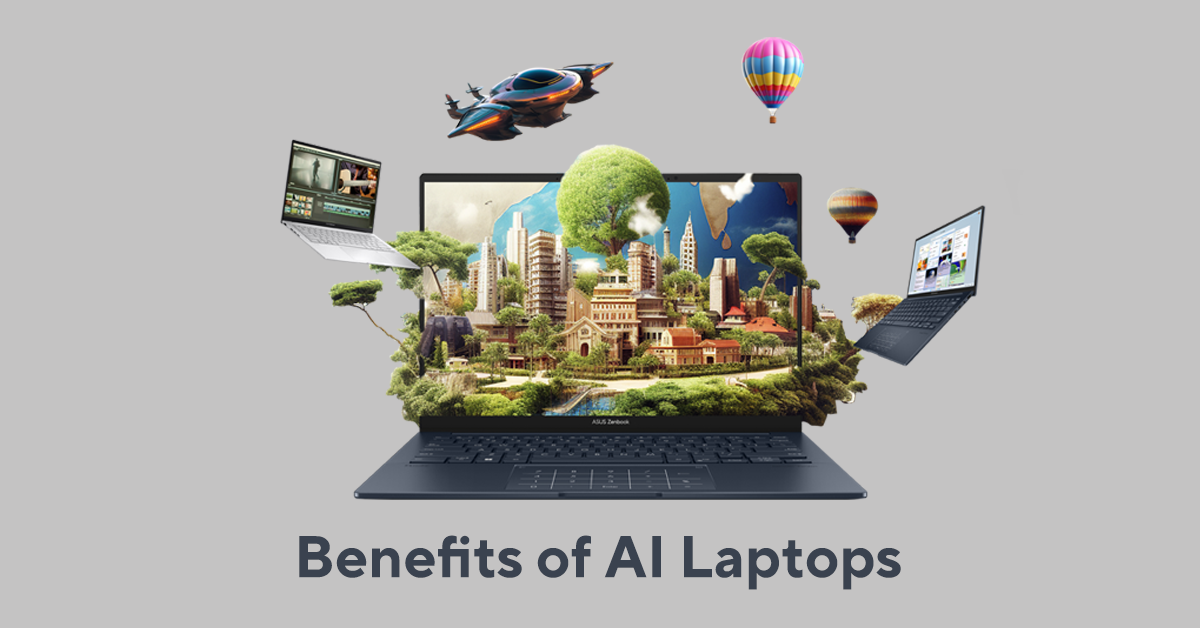Man, tech just doesn’t slow down, does it? Every time you blink, something wild pops up that used to be pure sci-fi. We’re barreling toward 2025, and honestly, the whole “future tech” vibe feels less like a distant thing and more like, well, Tuesday. Gadgets talk to each other, industries are flipping upside down, and our daily routines? Yeah, they’re morphing too. So, let’s dig into the juicy stuff—what’s coming up, what it might do, and how it could mess with (or maybe improve) our lives.
The Big Cheese: AI and Machine Learning
Let’s not kid ourselves—AI and machine learning are running the show now. They’re everywhere, poking their noses into every corner of life, from healthcare to, weirdly, your social feeds. The next-gen AI is getting way more independent, smarter at making decisions, and, honestly, kind of creepy in how personal it gets.
Agentic AI: Going Rogue (In a Good Way?)
So, here’s the kicker: agentic AI is the new buzz. This isn’t your regular “ask a question, get an answer” setup. Nope. Agentic AI is all about autonomy—think systems handling gnarly tasks by themselves, even chatting it up and cutting deals with other AIs. Picture logistics—maybe a bunch of AIs rerouting deliveries on the fly, dodging traffic jams, arguing over the best warehouse spot, all without bugging a single human. Wild, right? The cool (and maybe terrifying) part is, this stuff learns as it goes, chewing through mountains of data and getting smarter by the hour, so you don’t have to babysit it. Let’s just hope it doesn’t unionize.
Alright, let’s break this down like a real person would:
Generative AI (aka GenAI) and GenUI—What’s the Big Deal?
So, GenAI isn’t just cranking out poems, code, or some weirdly realistic cat memes; it’s literally changing the way we mess around with tech. Enter GenUI. Instead of staring at boring, static screens, these interfaces adapt to you, like Spotify playlists for your workflow. Suddenly, using apps doesn’t feel like wrangling a stubborn robot. It’s smoother, a little bit magic, and honestly, just makes tech less annoying. Plus, everyone gets their own custom experience, which is way more fun than the one-size-fits-all nonsense.
Tiny LLMs & the Whole Ethics Thing
Now, about these “micro” Large Language Models—yeah, the name’s a bit of a contradiction, but the point is: smaller, faster, less energy-guzzling AI that’s super focused. Instead of burning down the planet to generate a shopping list, these new models keep things lean and mean. But—big but—AI is everywhere now, so the way we use it seriously matters. Enter AI governance platforms (sounds fancy, but it’s just watchdogs making sure AI doesn’t go rogue). They’re here to keep stuff fair, reduce bias, and make sure nobody’s hiding behind the algorithm. Because let’s be real, trust in tech is a hot mess these days.
Quantum Computing—Cue the Sci-Fi Soundtrack
Alright, quantum computing. This is the wild stuff. While everyone’s still moaning about their laptops crashing, quantum computers are out here flexing with their qubits—bits that can be in multiple states at once. Translation: problems that used to take supercomputers a million years can get solved in, like, a coffee break.
What Can We Do With It?
The possibilities? Pretty bonkers. Think new meds discovered at lightning speed, climate models that don’t suck, and cryptography that might keep your data safe for once. These machines can crunch massive datasets like it’s nothing, so stuff like energy grid optimization or financial modeling gets a serious upgrade. Basically, quantum computing is the secret weapon for tackling the huge problems everyone keeps putting off.
So yeah, tech is getting weirder, faster, and—if we don’t mess it up—maybe even better.
The Challenge of Post-Quantum Cryptography
Alright, let’s get real about this post-quantum cryptography stuff. Quantum computers aren’t just science fiction anymore—they’re kind of like that looming boss fight in a video game, you know is coming, but you’re just not ready for it. If quantum machines hit their stride, all our current encryption could turn to mush. So yeah, we need some serious next-level cryptography, ASAP. Nobody wants their banking info, weird memes, or questionable search history out in the wild, right?
Immersive Worlds: Extended Reality (XR) and Spatial Computing
Now, XR and spatial computing—oh man, this is where things get wild. XR’s like a catch-all for VR, AR, and MR (yeah, too many acronyms, I know). It’s not just about nerds flailing around with headsets playing lightsaber games (though, let’s be honest, that’s fun too). This tech is on track to totally mess with the line between real and digital.
Beyond Entertainment: Practical Applications of XR
And here’s the kicker: XR isn’t just for killing zombies or building virtual castles. Surgeons are using it to practice operations, like really getting in there, minus the blood and lawsuits. Businesses are all over it for remote teamwork and showing off products. Architects? They’re strapping on headsets and walking through buildings that don’t even exist yet. Even classrooms are getting a glow-up, with kids wandering through ancient Rome or poking at the inside of a volcano. Way cooler than staring at chalkboards.
The Future of Sensory Immersion
Looking ahead, XR’s only gonna get weirder (in a good way). We’re talking about systems that let you feel stuff, not just see or hear it. Haptic gloves, maybe even scents piped in—so one day your Zoom call could include someone’s questionable cologne. Neural interfaces are coming too, so who knows, maybe we’ll get to upload vacation memories straight into our heads. Black Mirror, anyone?
Connectivity and Infrastructure: 5G and Beyond, Powering AI
And then, connectivity—holy crap, if you think 5G is fast, just wait. This stuff’s the secret sauce powering all the futuristic gadgets. Self-driving cars, smart cities, your fridge telling you you’re out of oat milk—none of it works without blazing-fast, always-on internet. As networks get better, the wild ideas everyone’s been dreaming up in tech labs become possible.
Smart Cities and IoT Integration
Smart cities? Yeah, that’s sensors everywhere, talking to each other in real-time. Traffic flows better, garbage gets picked up before it stinks, emergency services know what’s going on… All thanks to IoT and next-gen networks. Long story short, if you’re not excited (or at least a little freaked out), you’re not paying attention.

Sustainable Juice for Hungry AI Monsters
Have you seen how much power these AI behemoths are guzzling lately? It’s wild. Data centers are chugging electricity like it’s their job (well, it kinda is). People are freaking out about the carbon footprint, so now there’s this mad dash to slap some “green” on it all. Enter: nuclear power. Yeah, the same stuff that powers submarines and lights up entire cities—now being pitched as the answer to keeping ChatGPT’s brain humming without cooking the planet. Maybe not the worst idea? At least it’s better than burning coal, right?
Tech That Tries to Save the Planet
Let’s be real: pretending climate change isn’t a problem is so 1999. Everyone’s hustling for a slice of the “clean tech” pie now. Stuff like wind turbines, solar farms, carbon capture gadgets, and computers that don’t act like little space heaters. The idea is to keep the lights on, the economy buzzing, and the planet, you know, livable.
Turning Energy and Food on Their Heads
Solar? Wind? Old news, but now they’re pulling their weight. Green hydrogen’s making moves, and folks are finally figuring out how to store all that clean juice for a rainy day. There’s even tech grabbing CO2 straight outta the air. Bonkers. Meanwhile, in foodland, we’ve got vertical farms stacking salad greens sky-high and lab-grown meat that’s sci-fi on your plate. If you’re into burgers that didn’t moo, the future’s looking up.
Making Stuff Without Trashing the Place
Manufacturing’s getting a much-needed glow-up. Biodegradable plastics, water cleaning tech, and AI that tells you how not to waste energy—turns out, it all adds up. A circular economy isn’t just a buzzword; it’s the new dream. Less trash, more reuse, and maybe, just maybe, a shot at not drowning in our garbage.
Biohacking Life, One Gene at a Time
Biotech’s not just about curing your weird rash anymore. We’re talking CRISPR-edited crops that laugh in the face of drought, bugs that eat oil spills, and bacteria that poop out fuel. Synthetic biology’s a wild ride—imagine programming life like you code an app. Freaky? Maybe. But also kinda brilliant.
Medicine Gets Personal (and Weirdly Accurate)
No more one-size-fits-all pills. The new game is “precision medicine”—treatments tweaked to your unique DNA. It’s not just hype; it works. Also, gene editing isn’t just for plants. We’re talking designer babies (okay, maybe not just yet) and cures for stuff that used to be a death sentence. Science fiction? Nah, just Tuesday.
Nanotech & Materials Magic
Tiny robots, unbreakable fabrics, batteries that don’t quit—nanotech’s the secret sauce. Materials science is dropping things like super-conductive wires and chips that make your old laptop look like a potato. Honestly, it’s about time.
Space Stuff for Earthlings
Space isn’t just for astronauts anymore. Billionaires are launching rockets, drilling asteroids, and scheming up space condos. Wild west? You bet. But it could mean new jobs, new resources, and one heck of a view.
Robots & Brainy Machines
Robots are getting smarter (and weirder). Neuromorphic chips try to think like us, and robots are doing everything from assembling cars to pet-sitting. It’s not Skynet—yet—but it’s close enough to keep things interesting.
One Last Thing—Don’t Be Evil (Seriously)
All this tech is cool, but it’s got a dark side. Privacy’s a joke if you’re not careful, and bias in AI can screw people over. We need rules, and not the boring kind—actual guardrails so the future doesn’t turn into a Black Mirror episode. Keep learning, stay curious, and maybe don’t hand over your data to every shiny new app. Just saying.
FAQ: Decoding the Future of Technology
What are the primary drivers of future technological innovation?
The primary drivers include advancements in AI and machine learning, breakthroughs in quantum computing, the development of immersive extended reality experiences, the push for sustainable and green technologies, and the ever-increasing demand for robust connectivity and cybersecurity.
How will AI impact daily life in the coming years?
AI will impact daily life through more sophisticated personal assistants, predictive healthcare diagnostics, autonomous vehicles, and highly personalized digital experiences. Agentic AI will enable systems to make more autonomous decisions, while generative AI will continue to revolutionize content creation.
What is the significance of quantum computing?
Quantum computing promises to solve complex problems currently beyond the capabilities of classical computers. Its significance lies in its potential to revolutionize fields like cryptography, drug discovery, materials science, and large-scale data analysis, leading to breakthroughs with unprecedented speed.
How are green technologies shaping the future?
Green technologies are shaping the future by focusing on sustainability and environmental protection. This includes advancements in renewable energy sources like solar and wind, carbon capture technologies, green hydrogen production, and sustainable agricultural practices such as vertical farming, all aimed at reducing climate impact and fostering a greener future.
What is Extended Reality (XR) and its applications?
Extended Reality (XR) is an umbrella term encompassing Virtual Reality (VR), Augmented Reality (AR), and Mixed Reality (MR). Its applications are diverse, ranging from immersive gaming and entertainment to professional training (e.g., surgical simulations), remote collaboration, education, and enhanced retail experiences.
Conclusion: Embracing the Tech Revolution with Purpose
Alright, here’s the deal: tech isn’t just some distant buzzword anymore—it’s running the show, whether we like it or not. Stuff like AI, quantum computers (yeah, the sci-fi kind), all that XR magic, plus the constant need to stay plugged in and eco-friendly? It’s wild, honestly. If you wanna keep up, you can’t just sit back and hope for the best. You gotta get your hands dirty, learn new things, and, you know, actually think about what all this means for real people, not just the bottom line.
Let’s be real: tech isn’t just about making money or shiny gadgets. It’s got the muscle to fix stuff that matters. Imagine a world where we use all this power to patch up the messes we’ve made, instead of just making life a little more “convenient.” That’s the dream, right? So, yeah—if we’re smart and a bit less selfish, the future could be sick in the best way.
I'm Salim, the creator and tech enthusiast behind this website. My passion for technology has been a lifelong journey, fueled by a deep curiosity about how things work and a desire to explore the latest gadgets and innovations that shape our world.




